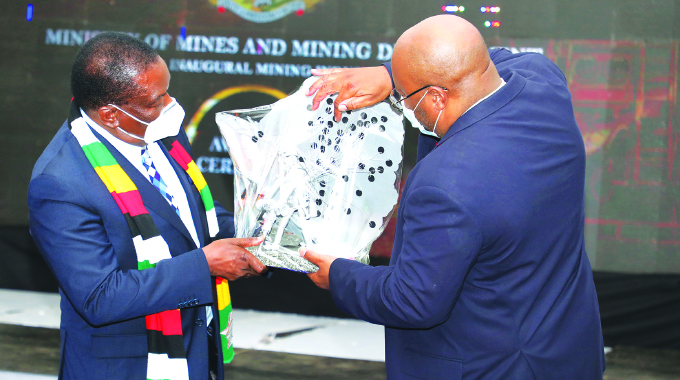Zimbabwe, Botswana in joint metallurgical coke research

Sifelani Tsiko Agric, Environment & Innovations Editor
Researchers from Zimbabwe and Botswana are investigating the potential for the production of metallurgical coke used in most smelting operations to reduce the percentage of expensive imported coking coals in blends used by mining companies in the two countries.
Prof Edison Muzenda, a co-principal investigator with another researcher from Botswana are working on a coal beneficiation for the metallurgical industry project to find new ways of improving coke quality while conserving the range of cokeable coals and reducing imports.
“The main objective of the project is to identify the coal resources that are suitable for the production of metallurgical coke in Botswana and Zimbabwe and then, to propose a procedure of manufacturing this particular coke,” he said.
“We want to produce coke that will produce the highest quality of the metallurgical grade coke with minimal cost and risk to the longevity of the coke oven battery.”
Zimbabwe and Botswana have vast coal deposits.
Zimbabwe holds 553 million tonnes of proven coal reserves and consumes about 2.9 million tonnes per annum according to the 2016 statistics (Worldometer, 2016) while Botswana is reported to have approximately between 106 and 212 billion tonnes of coal resources.
Prof Muzenda said Zimbabwe and Botswana could possibly benefit from the thermochemical conversions of their abundant coal resources to produce such high-value products such as metallurgical coke.
“Botswana and Zimbabwe coals could possibly be used in the production of metallurgical coke to serve the region and other international markets considering that there is a net import of coke in the region despite these reported abundant coal reserves,” he said.
University of Zimbabwe in collaboration with the Botswana International University of Science and Technology are implementing a bilateral project on coal beneficiation for the metallurgical industry.
The project is supported by the Botswana Innovation Hub (BIH) and the Research Council of Zimbabwe (RCZ) as science granting councils (SGCs) under the Science Granting Councils Initiative (SGCI).
The two countries were part of the 16 African countries, participating in the SGCI programme.
This initiative was building up on Phase One of SGCI’s objective of seeking to strengthen the capacities of Science Granting Councils (SGCs) in sub-Saharan Africa (SSA) to support research and evidence-based policies that will contribute to socio-economic development.
The joint research on coal beneficiation is jointly funded by the Department for International Development (DFID), now known as the Foreign, Commonwealth & Development Office (FCDO), Canada’s International Development Research Centre (IDRC), South Africa’s National Research Foundation (NRF) and the Swedish International Development Cooperation Agency (SIDA).
Prof Muzenda said the economics of metallurgical coke production were more favourable than for blast furnace coke as a result of the opportunity to use low cost locally-produced coking coals in comparison to blast furnace coke, which requires a high percentage of imported higher cost premium hard coking coals.
Coal beneficiation, or coal preparation as it is also termed, refers to the processes through which inorganic impurities are separated from raw mined coal, thereby providing improved combustion characteristics to the fuel produced.
This coal beneficiation process can effectively reduce the content of heavy metals of fly ash, encouraging the use of clean coal to reduce pollutants emission.
The basic purpose of beneficiation is to reduce the ash forming impurities from raw coal so that better coal with less ash content can be produced.
If these ash forming constituents are not removed, and coal is directly charged to the coke-ovens, the ash content in coke will increase and subsequently more slag will be produced in the blast furnace thereby lowering the efficiency of the blast furnace.
Prof Muzenda said researchers from Botswana and Zimbabwe had done field work in operational mines in the two countries to collect samples.
Two operational coal mines were visited namely Morupule Coal Mine in Palapye and Masama Coal Mine in Medie operated by Minergy.
“Coal samples were collected and these will be analysed to confirm exploration data or provide missing information,” Prof Muzenda said.
“Sample preparation and analysis will be conducted on these in an effort to study the coal and understand how its value and characteristics can be enhanced or manipulated for metallurgical coke production including possible blending with Zimbabwe and other Botswana coals.”
The world market for coke and coking coal is firm and expanding.
Global metallurgical coke production was estimated to be 680 000 tonnes in 2021, according to the latest data from Smithers.
The regional demand for coke is currently estimated at four million tons per annum and direct imports amount to a third of this demand and could all be replaced by coke produced in Zimbabwe and Botswana, if the investigations reach fruition.
South Africa imported 0.06 million metric tons of metallurgical coke in 2020 and both global and regional demand presented opportunities that Botswana and Zimbabwe should take advantage of.











Comments